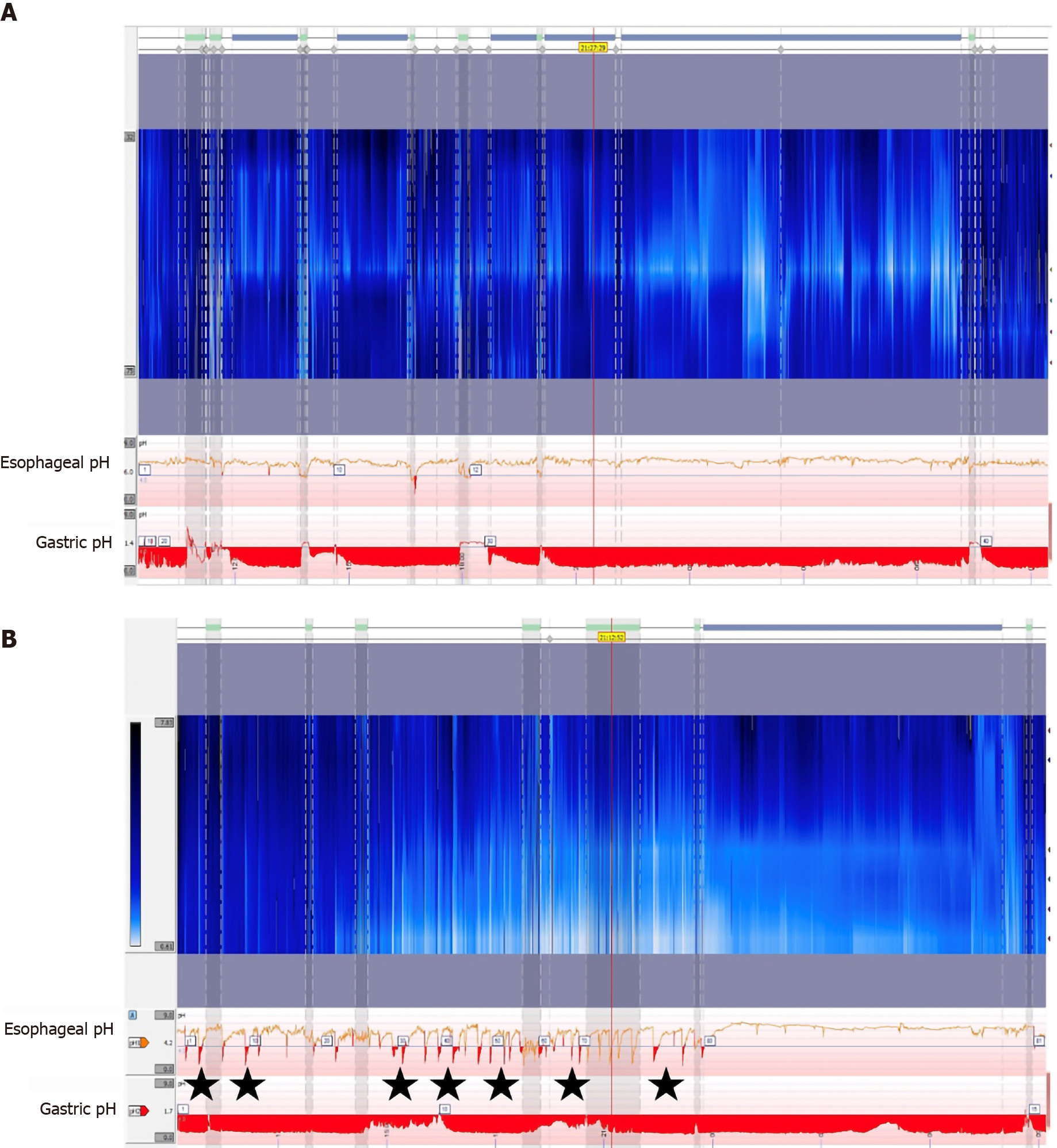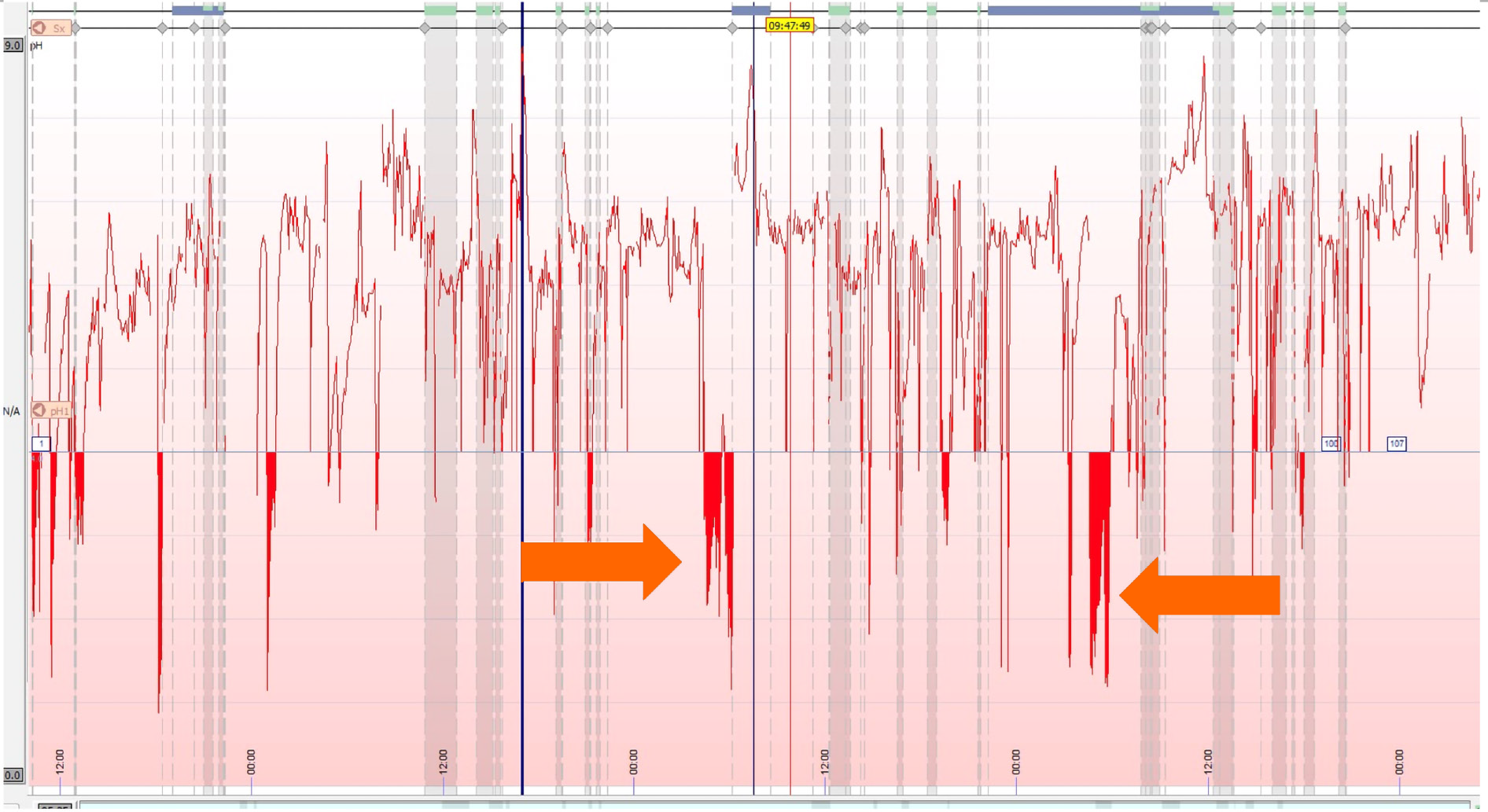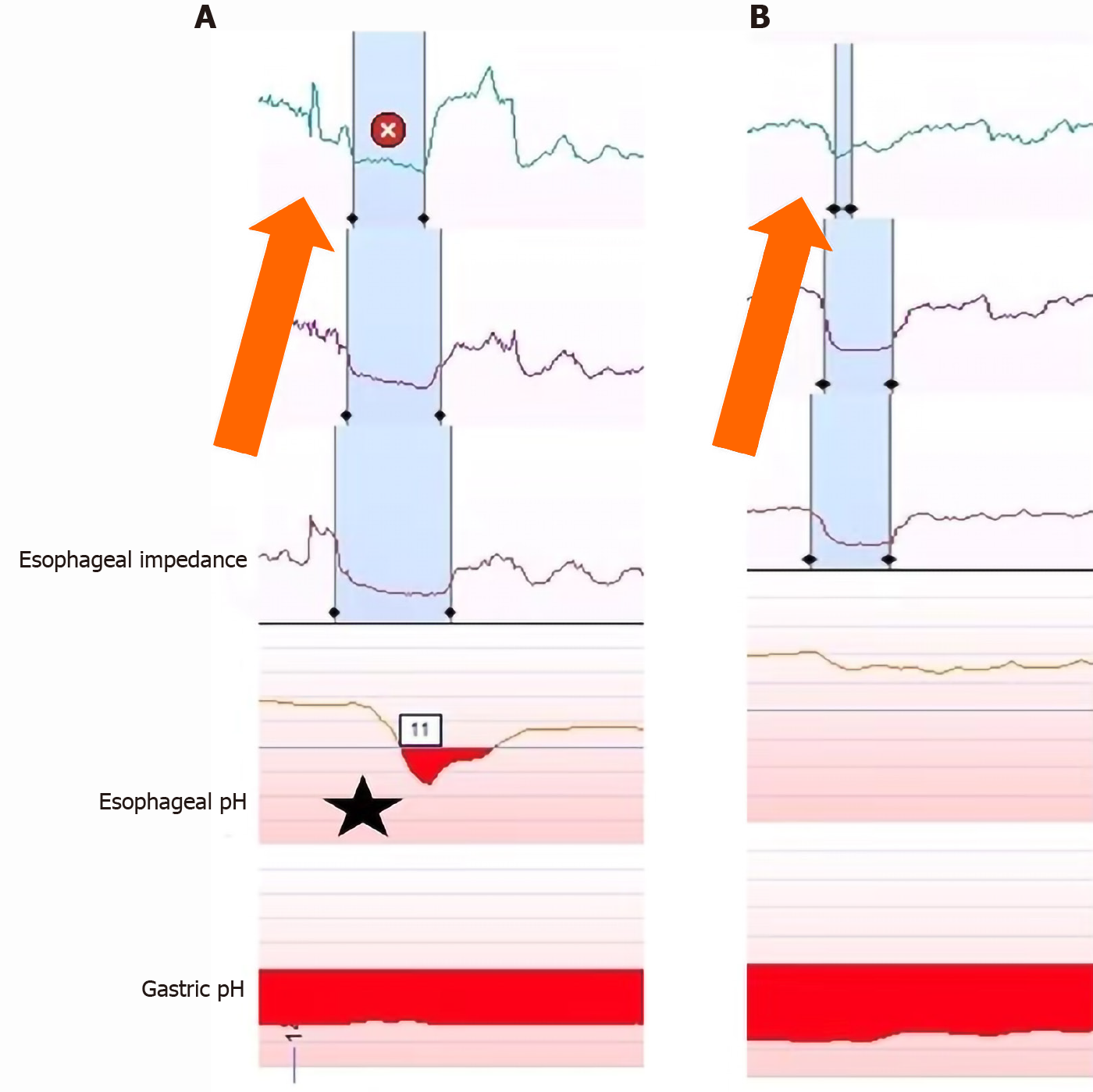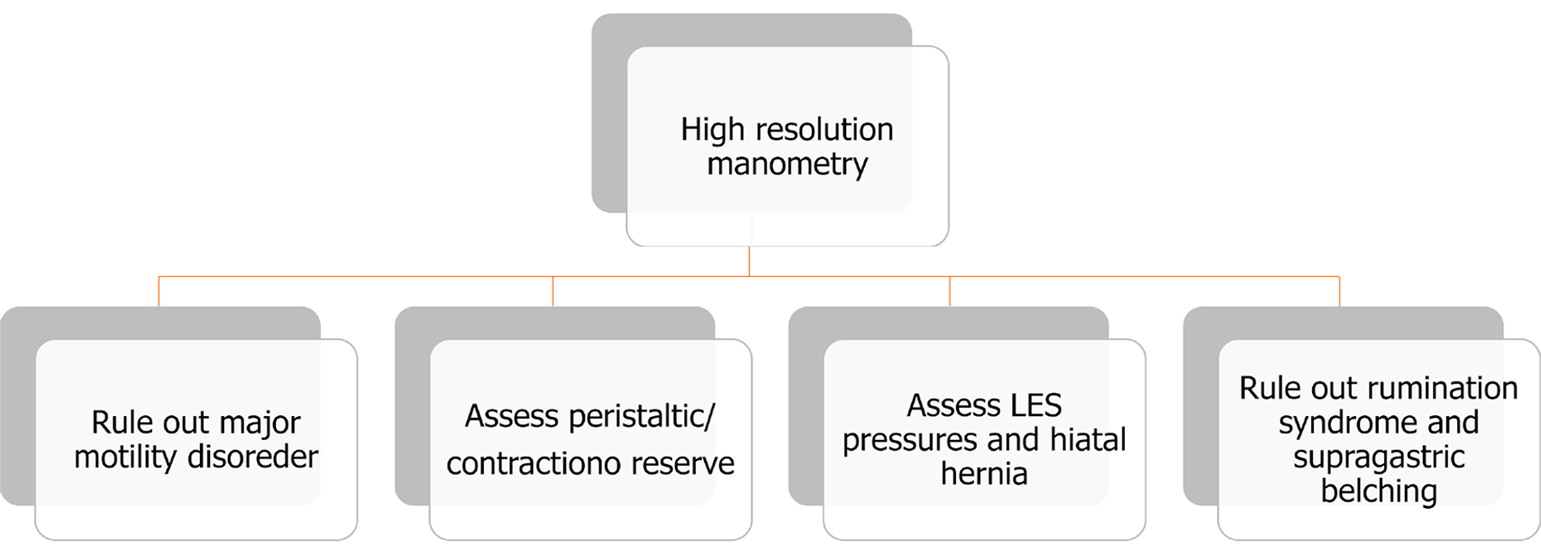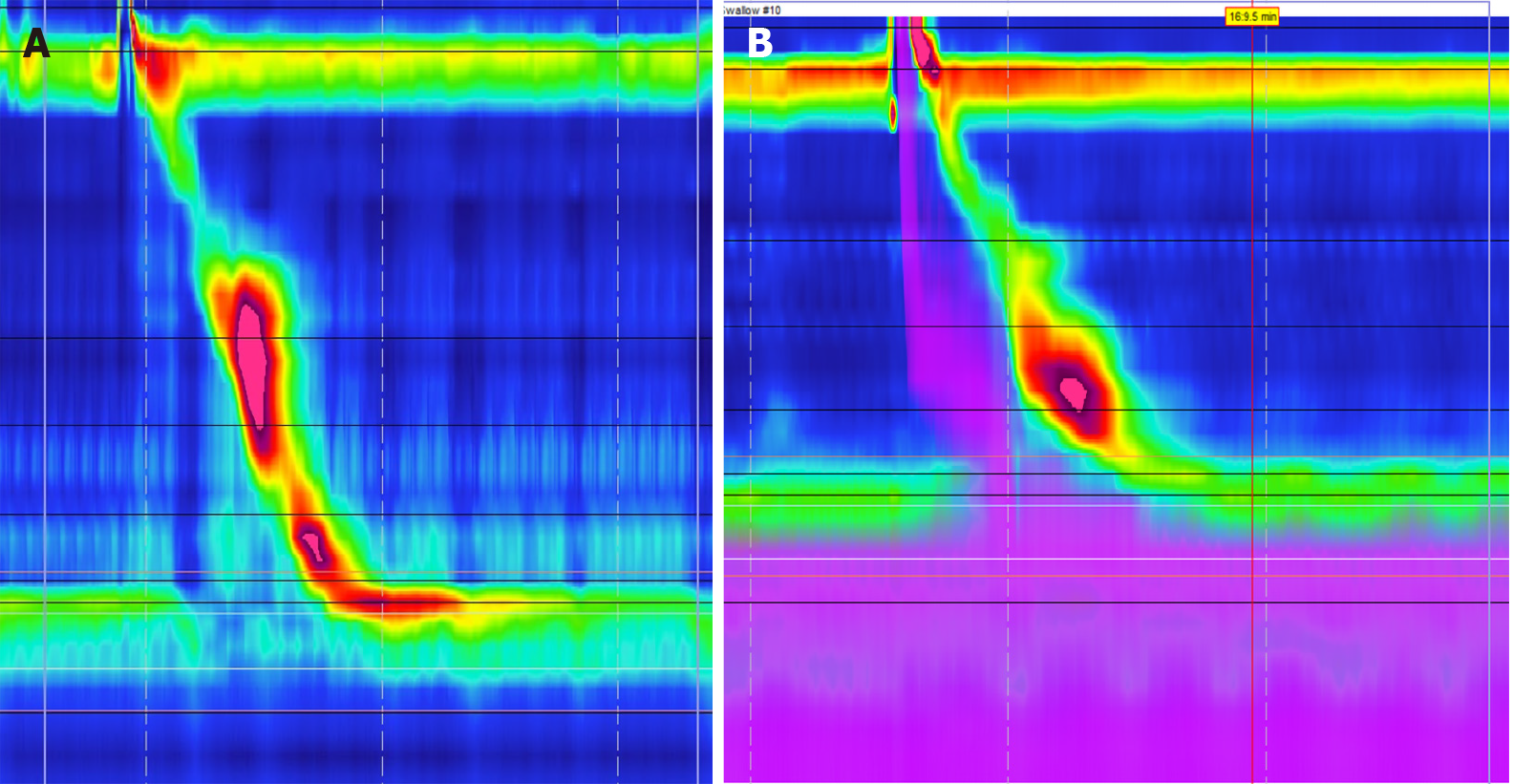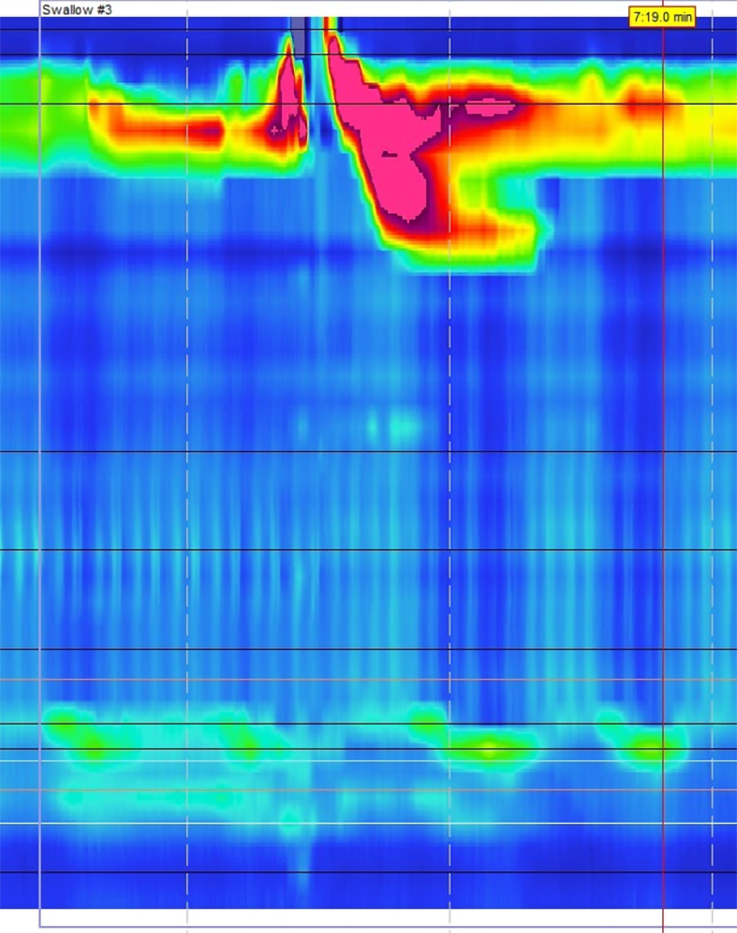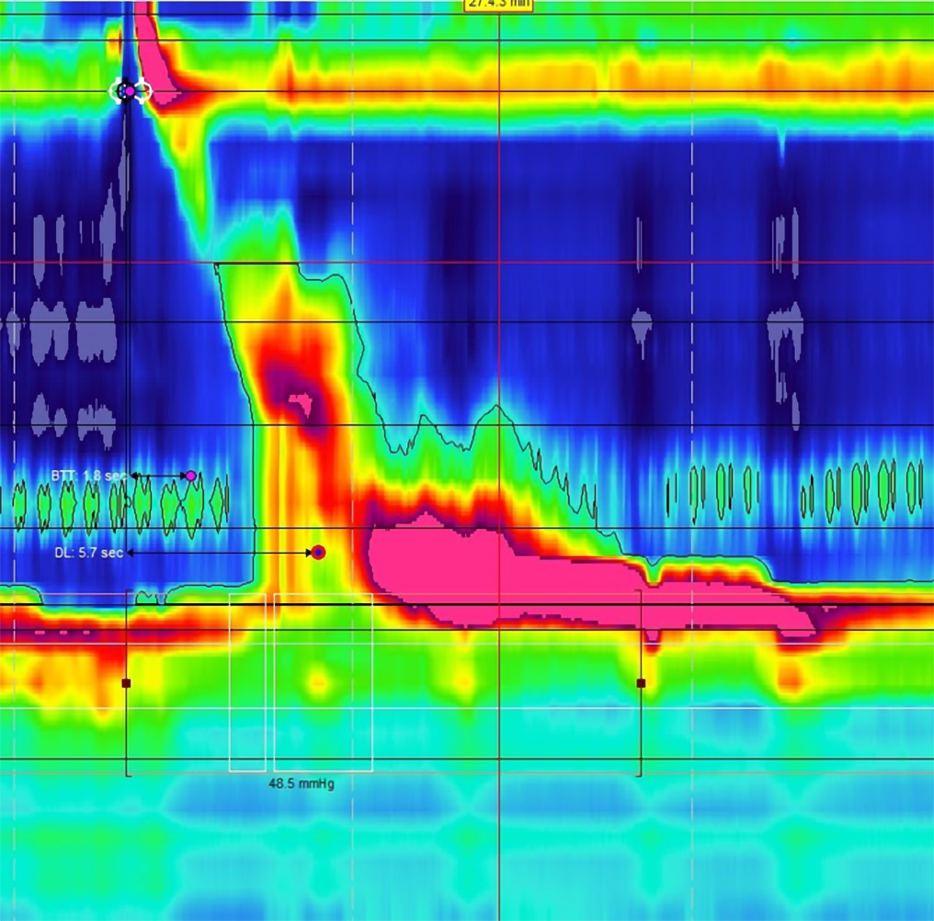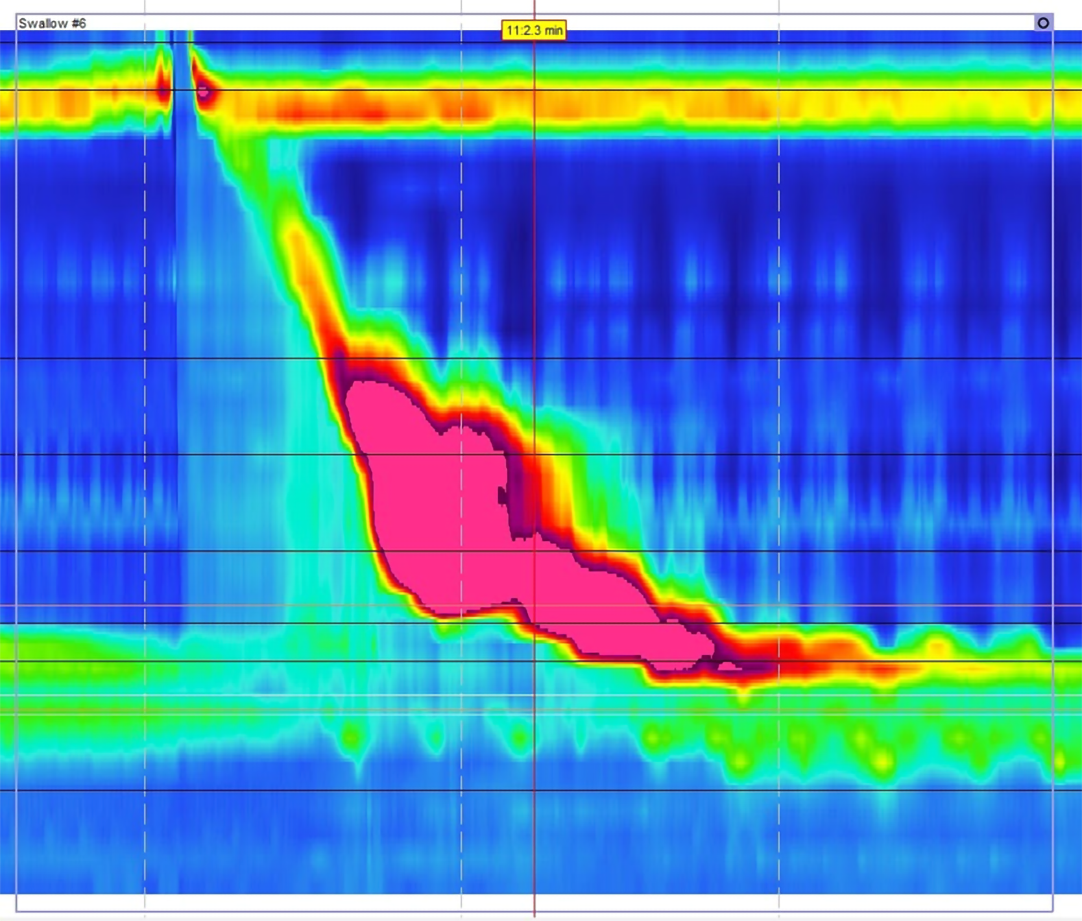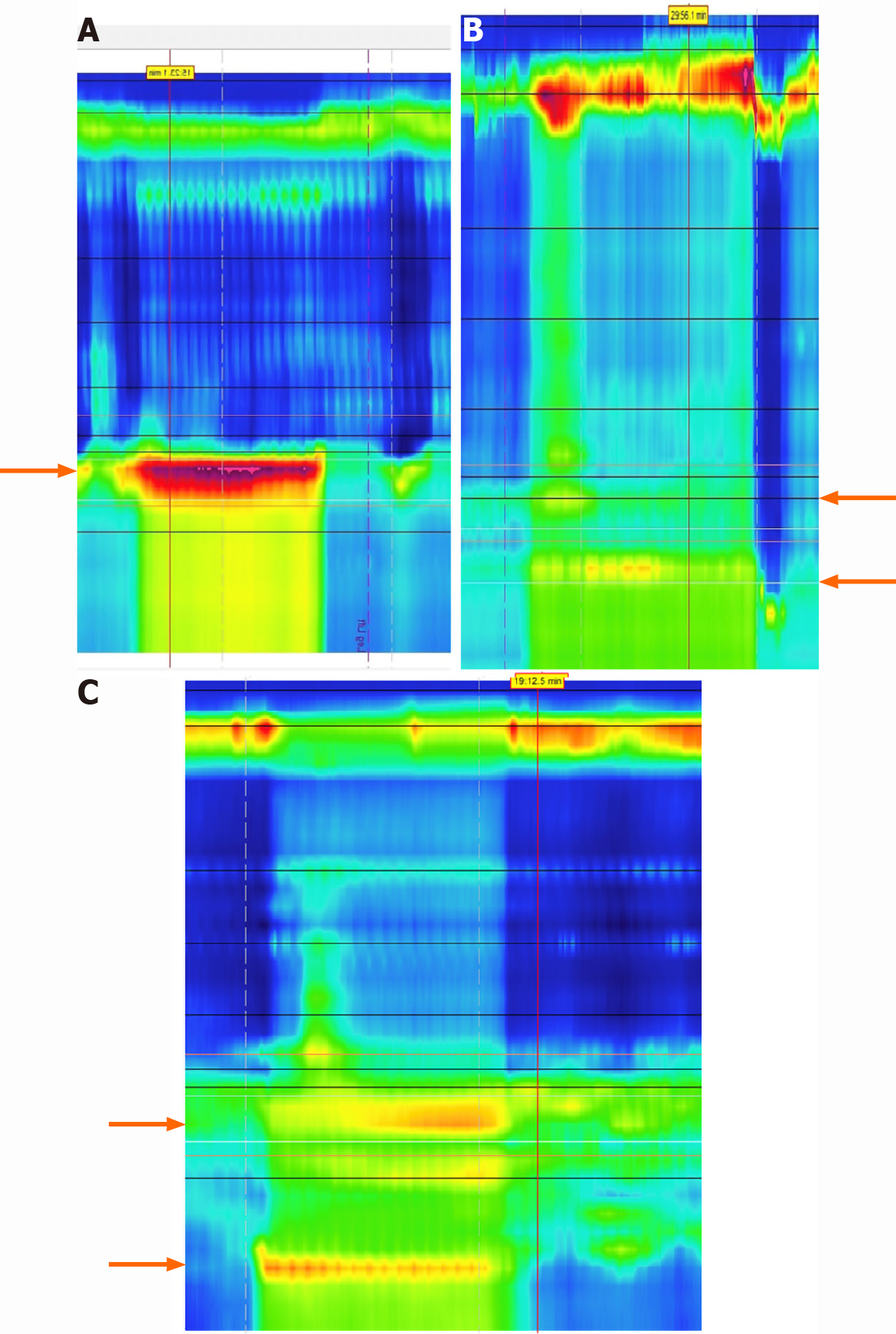Copyright
©The Author(s) 2021.
World J Gastroenterol. Apr 28, 2021; 27(16): 1751-1769
Published online Apr 28, 2021. doi: 10.3748/wjg.v27.i16.1751
Published online Apr 28, 2021. doi: 10.3748/wjg.v27.i16.1751
Figure 1 Twenty-four hours pH studies.
A: Normal 24 h pH study showing acid in the stomach without acid reflux events in the esophagus; B: Abnormal 24 h pH monitoring test with multiple acid reflux events in the esophagus (star indicating reflux events).
Figure 2
Abnormal wireless capsule pH study (arrows indicating prolonged reflux events).
Figure 3 Examples of pH-impedance measurements.
A: Reflux event recorded during 48 h pH-impedance study; B: Weak acid reflux event in the esophagus without acid exposure in the stomach detected on pH-impedance study (arrows indicating impedance events, star indicating pH drop and acid event).
Figure 4 Utility of pH and multichannel intraluminal impendence pH testing for pre-operative assessment.
GERD: Gastroesophageal reflux disease; NERD: Non-erosive reflux disease; PPI: Proton pump inhibitor; AET: Acid exposure time; MII-pH: Multichannel intraluminal impendence pH monitoring.
Figure 5 Utility of high-resolution manometry for pre-operative assessment.
LES: Lower esophageal sphincter.
Figure 6 Normal peristalsis and lower esophageal sphincter relaxation on high-resolution manometry.
A: Example of normal swallow on high-resolution manometry; B: Normal swallow with complete esophageal clearance by impedance.
Figure 7 Examples of achalasia diagnosed on high-resolution manometry.
A: Type I achalasia with failure of lower esophageal sphincter relaxation and absence of peristalsis; B: Type II achalasia with panesophageal pressurization; C: Type III achalasia with abnormal peristalsis (spastic/premature contractions).
Figure 8
Scleroderma esophagus with absent peristalsis and hypotensive lower esophageal sphincter.
Figure 9
Outflow obstruction with elevated residual pressure and distal pressurization from chronic opioid use.
Figure 10
Example of hypercontractile esophagus with distal contractile integral > 8000 mmHg.
Figure 11 Findings on high-resolution manometry with multiple rapid swallow.
A: Normal multiple rapid swallow (MRS) with good contraction distal contractile integral; B: Weak esophageal contractions with MRS; C: Failed esophageal contractions with MRS.
Figure 12 Examples of straight leg raise testing during high-resolution manometry.
A: Normal straight leg raise test with single pressurization zone; B: Two pressurization zones after straight leg raise indicating presence of small hiatal hernia; C: Example of two pressurization zones after straight leg raise in patient with large hiatal hernia (Arrows indicate pressurization zones).
- Citation: Yodice M, Mignucci A, Shah V, Ashley C, Tadros M. Preoperative physiological esophageal assessment for anti-reflux surgery: A guide for surgeons on high-resolution manometry and pH testing. World J Gastroenterol 2021; 27(16): 1751-1769
- URL: https://www.wjgnet.com/1007-9327/full/v27/i16/1751.htm
- DOI: https://dx.doi.org/10.3748/wjg.v27.i16.1751









